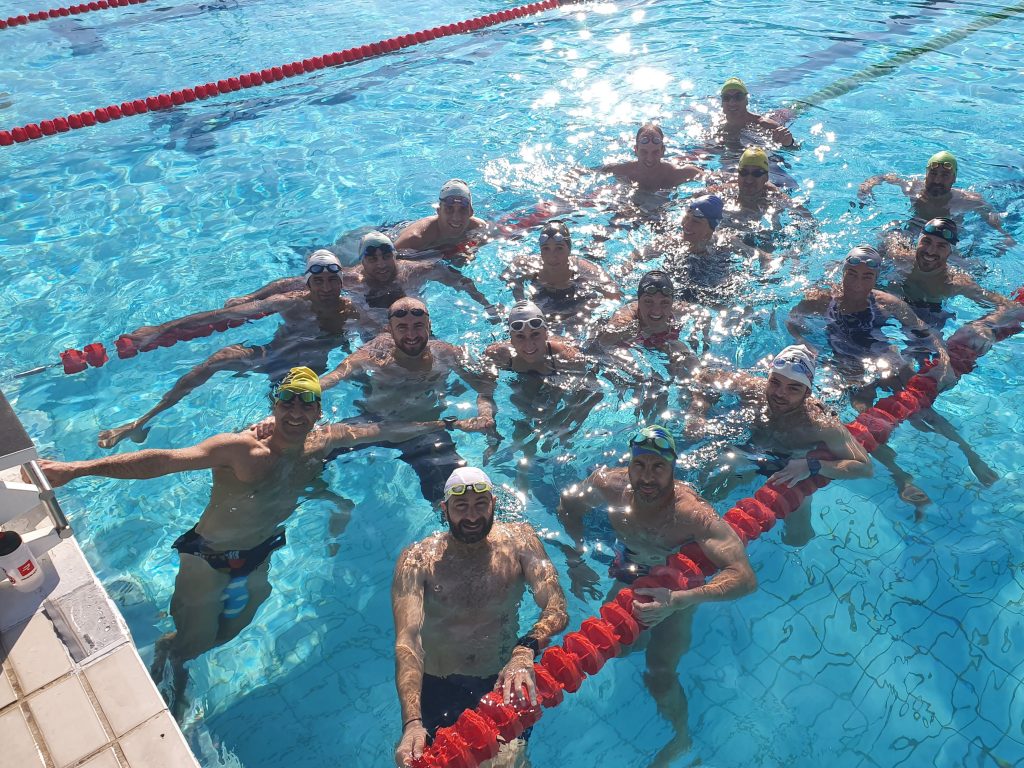The importance of training partners in sports, BY K.N*
Side by side during team training, we achieve more.

You are looking at the yearly calendar and you pinpoint to a date with a running or triathlon event in mind. That is great, you are one step further with your goal setting. People setting future goals are in a far better state with their proactive action Vs non-decision makers. Now all you have to do is find the right training plan, or consulting coach that fits you and start training.
With so many training sessions ahead to complete though, it makes sense that some of those could be done with good company. Indeed if you do add company to a long run, it makes that session so much more comfortable. Time goes by easier, km after km you clip those trails, feelings of fatigue are minimized, something just feels lighter and you end up finishing and asking yourself, “is that it”?
Psychology explains that if you have a partner waiting for you at the start of a cycling ride, or a run, the chances of you skipping this vital session are minimized, your enthusiasm is usually higher and your drive to fulfill that session is greater. Especially if this is a cold early February morning! Plus you are much more keen to complete the distance, happy with positive emotions during this activity, and the rate of perceived exertion (RPE) is usually lower. Hence success in the department of completing the workout.
There are of course some “traps” that you might fall into such as pushing at a higher % of max heart rate, and following you partner’s pace which is probably more intense. Also the demands of the session with your “faster partner” might push you way -off your predetermined task for the given session, and there must be clear understanding if doing so that this is accounted and justified for. In the bigger scheme of things though, training with a partner can yield benefits in the long term in many departments.
Now you can perform a small test on yourself by training alone and on another day with your partner, completing the same distance/ route /elevation and pace (min/km). The difference in psychological outcome is amazing and you can record a. RPE , and b. general feelings of wellbeing and c. how much more/less happy you are in each situation. Now if you increase the training partners for that same single session things become more interesting because not all people react the same with this increase. Some people might find that the group dynamics of this increase gave them a reduced RPE rating, completing the session feeling a lot less fatigued. Some others were left exhausted due to the variability of the paces that the group kept. Some others were so excited that they wanted to take the lead very often increasing the avg. pace for the session. Overall the increase in partner numbers for the same session, gave a lighter feeling of fatigue to most (assuming that the fitness level of most participants was quite homogeneous to start with ).
Envision a swimming team training together in the same pool doing similar sets and varying the speed according to ability. The overall understanding with remarks taken from most swimmers was that the drive to go to the pool and practice with the team, was much more favorable Vs training alone. Similar outcomes are reported for distance runners ( of similar fitness abilities )and the message for most high performance level athletes is that training with one or more partners yields more workout minutes per training phase and probably better results in fitness.
Worth noting though and it is very logical to understand that not all workout sessions and not all training partners are created equal, and there are just some things that will not work if mixed together. You can let your imagination wonder on that, but it is very clear that you need to make the final judgment call if joining in or not, is the right thing to do. Select activities that will not strain one of you, and select a lighter day or maybe even hold back at some tough segments of the session, let your partner go faster at it and regroup shortly after. Still the positive emotions gained outweigh the negative.
With the latest tech data driven activities, training partners can also compare numbers post workout, beyond the positive emotions gained, and get insights on sports physiology, enriching the athlete know- how. This last bit can be fully unraveled with the input of an experienced coach or sport scientist answering crucial questions about energy expenditure, cardiac response, paces/HR, recovery, power meter parameters, … the list goes on. The quest is to get out there, feel good with company and couple that with the right prescription as Sports Physiology dictates.
—————————————————————————
*Kypros Nicolaou is an Exercise Physiologist, graduate of the University of Alabama, an ACSM certified Health & Fitness Instructor, holds an ITU Level II Certification as a Triathlon Coach, and is a multiple Ironman & Half Ironman Triathlon finisher. He is coaching Triathletes online, teaches Functional Training at Ryltoday, and performs Exercise Physiology assessments at the Cyprus Sports & Research Center. info@ryltoday.com


No Comments